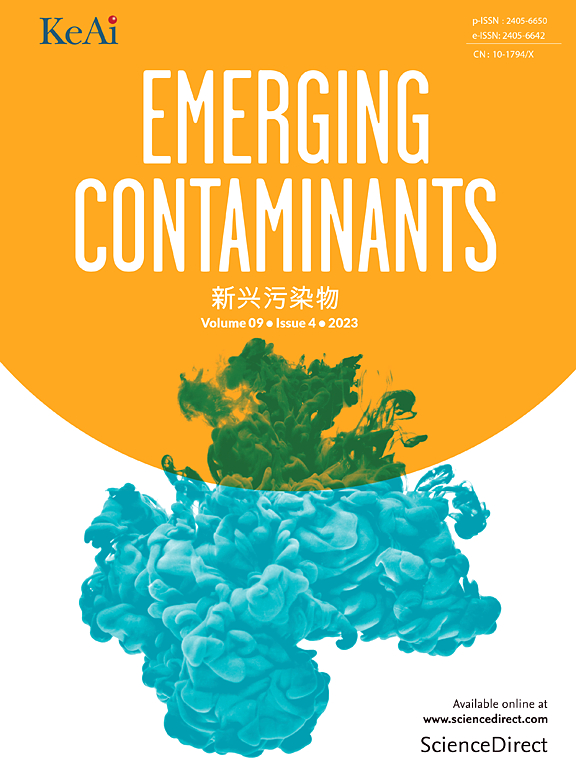Exposure to bisphenol A and its analogs provides a preliminary indication of the risk of cognitive impairment for the elderly via an XGboost-based model
IF 5.3
2区 环境科学与生态学
Q1 ENVIRONMENTAL SCIENCES
引用次数: 0
Abstract
Bisphenol A (BPA) and its bisphenol analogs (BPs) serve as key precursors in the manufacturing of polycarbonate plastics and epoxy resins. However, due to BPA’ s detrimental health effects, there has been a growing global consensus to restrict its use. The elderly, being particularly susceptible to neurodegenerative disorders, represent a population of concern; yet, research exploring the association between BPs exposure and neurodegenerative diseases in the elderly remains scarce. In this study, the urinary levels of six BPs among 267 participants from the Shenzhen aging-related disorder cohort in China during 2017–2018 were measured. Cognitive status was evaluated using the Mini-Mental State Examination (MMSE), and the impact of sociodemographic factors, lifestyle habits, and dietary practices was analyzed through the Extreme Gradient Boosting (XGBoost) classifier. In this study, BPA was the highest urinary level of bisphenol compound detected in the high-risk group (2.10 ng/mL, 95.2 %). Significant differences in BPs levels were observed to the degree of education, tea consumption frequency, meat intake frequency, and distance of main road groups (P < 0.05). Notably, the absence of a significant positive correlation between BPF and BPA levels in high-risk groups for cognitive impairment implies more findings may be needed to fully evaluate BPF’ s actual human exposure levels. The XGBoost models have further revealed that BPA analogs exposure and certain housing characteristics were substantial contributors to the potential impact on cognitive impairment during aging not only BPA.

通过基于xgboost的模型,暴露于双酚A及其类似物提供了老年人认知障碍风险的初步指示
双酚A (BPA)及其双酚类似物(bp)是制造聚碳酸酯塑料和环氧树脂的关键前体。然而,由于双酚a对健康的有害影响,限制双酚a的使用已成为全球日益增长的共识。老年人特别容易患神经退行性疾病,是一个值得关注的人群;然而,探索bp暴露与老年人神经退行性疾病之间关系的研究仍然很少。本研究测量了2017-2018年中国深圳老龄化相关疾病队列267名参与者尿液中6种bp的水平。采用Mini-Mental State Examination (MMSE)评估认知状态,并通过Extreme Gradient Boosting (XGBoost)分类器分析社会人口因素、生活习惯和饮食习惯的影响。在本研究中,BPA是高危人群尿液中检测到的最高双酚化合物水平(2.10 ng/mL, 95.2%)。受教育程度、饮茶频次、肉类摄入频次和主干道群距离对bp水平有显著影响(P <;0.05)。值得注意的是,在认知障碍高危人群中,双酚pf和双酚a水平之间没有显著的正相关关系,这意味着可能需要更多的发现来全面评估双酚pf的实际人体暴露水平。XGBoost模型进一步表明,BPA类似物暴露和某些住房特征是衰老过程中认知障碍的潜在影响因素,而不仅仅是BPA。
本文章由计算机程序翻译,如有差异,请以英文原文为准。
求助全文
约1分钟内获得全文
求助全文
来源期刊

Emerging Contaminants
Medicine-Public Health, Environmental and Occupational Health
CiteScore
10.00
自引率
6.70%
发文量
35
审稿时长
44 days
期刊介绍:
Emerging Contaminants is an outlet for world-leading research addressing problems associated with environmental contamination caused by emerging contaminants and their solutions. Emerging contaminants are defined as chemicals that are not currently (or have been only recently) regulated and about which there exist concerns regarding their impact on human or ecological health. Examples of emerging contaminants include disinfection by-products, pharmaceutical and personal care products, persistent organic chemicals, and mercury etc. as well as their degradation products. We encourage papers addressing science that facilitates greater understanding of the nature, extent, and impacts of the presence of emerging contaminants in the environment; technology that exploits original principles to reduce and control their environmental presence; as well as the development, implementation and efficacy of national and international policies to protect human health and the environment from emerging contaminants.
 求助内容:
求助内容: 应助结果提醒方式:
应助结果提醒方式:


